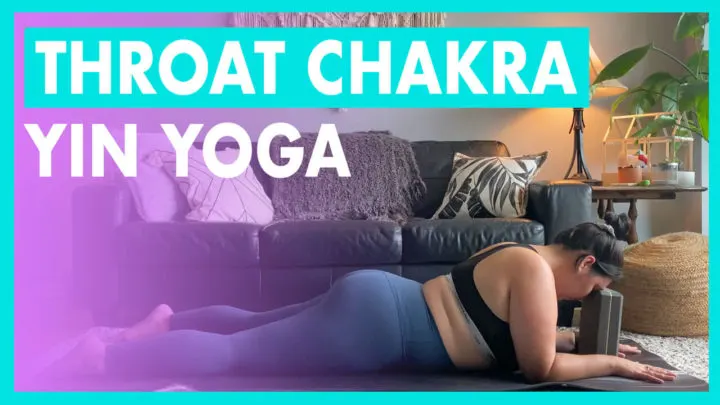The throat chakra is the chakra that connects the lower chakras to the upper chakras. The chakras that ground us, and connect us to ourselves and Mother Earth are our lower chakras. Our upper chakras connect to our energy, what’s beyond our physical bodies, and maybe even to a higher power. The 5th chakra, or the Vishuddha chakra, brings these differences together through the power of our voices. Yoga can help to balance this chakra, guiding you to create space around your neck and learn to speak up more and share your truth or to quiet your voice and find your voice in the silence.
Join me on the mat or pick and choose your favourite poses with the yoga for the throat chakra that’s below!
Throat Chakra Basics
Location: The base of your neck where the V shape, the beginning of your collar bone sits
Element: Ether (space)
Colour: Blue
Meaning: The throat chakra is related to speaking your truth and using your voice. Emotions associated with this chakra include denial, abruptness, and judgment.
Other names: Fifth chakra, Vishuddha chakra
Translation: Very pure
Love affirmations? Try adding these throat chakra affirmations into your practice!
Throat Chakra Yoga
Follow along for a guided throat chakra yin yoga sequence and in 35 minutes you’ll step off your mat with a more balanced Vishuddha chakra. Prefer something shorter? Pick and choose from the yoga poses below and do what you have the time for. Or you can opt for a practice with more energy with my throat chakra flow and poses.
For more practices like this, don’t forget to subscribe on YouTube!
Throat Chakra Yin Yoga Poses
While these are not the only yin poses for the throat chakra you can do, these are a great place to start stretching into your neck and creating space in this area that we so often don’t give much love to!
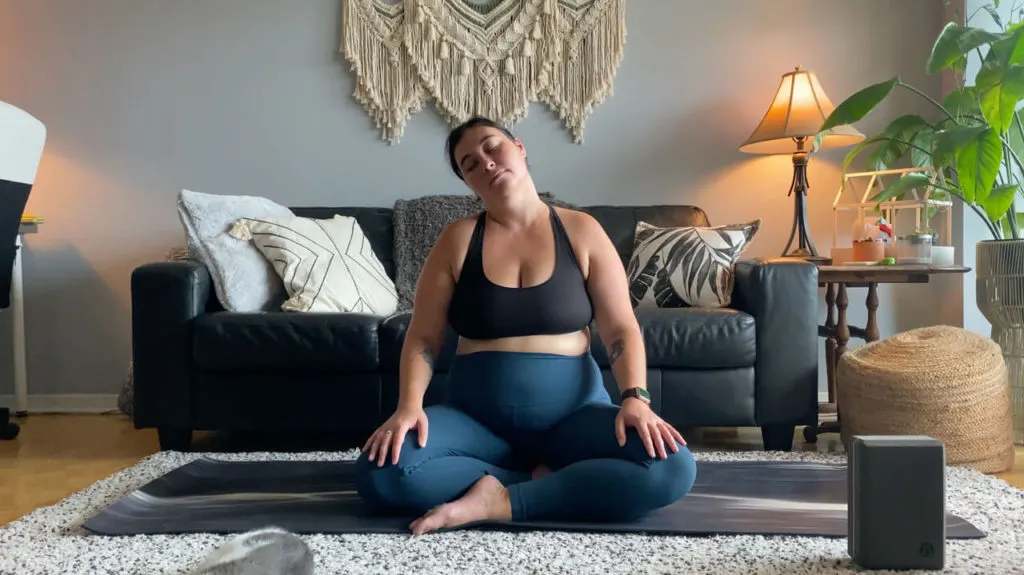
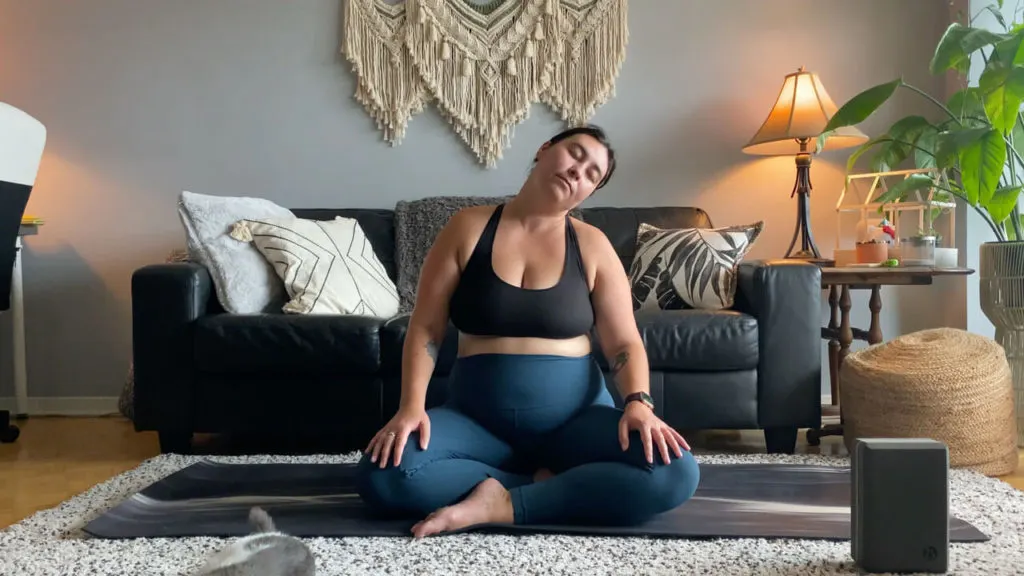
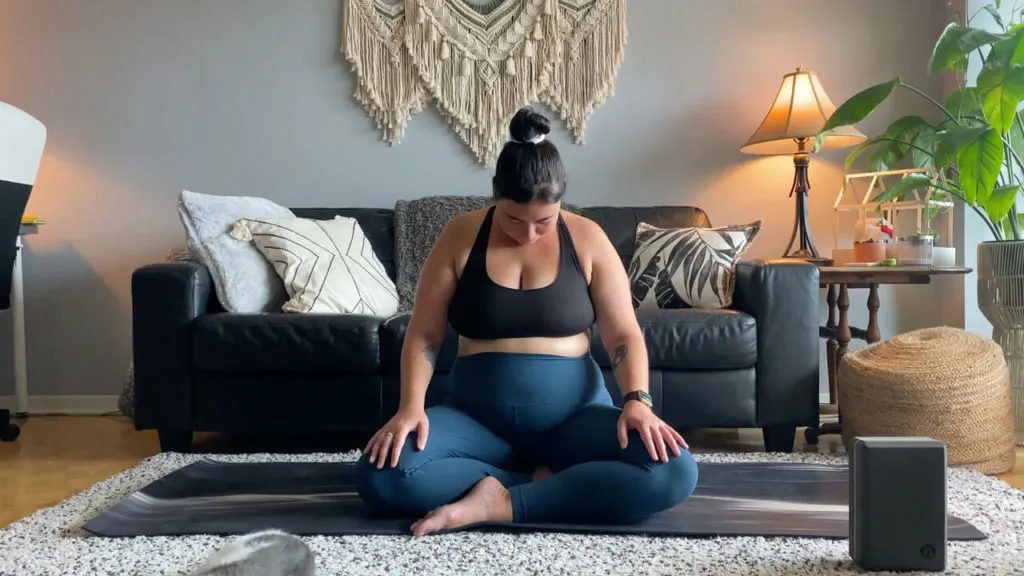
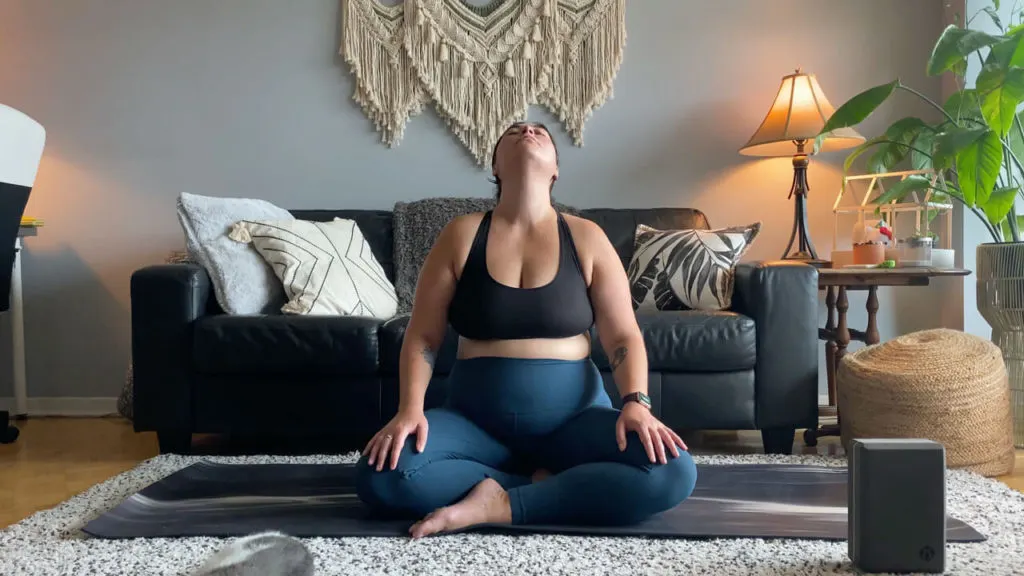
Neck Stretches in Meditation Pose
Our necks deserve more love than we give them, and since the throat chakra is located at the base of the neck, something as simple as slow and mindful neck stretches can help to create space in this area of the body.
Begin by sitting cross-legged in meditation pose. Your sit bones can be directly on the mat or you can choose to sit on a block or cushion for cushion and to help open your hips. Allow your tailbone to grow heavy and the crown of your head to grow tall. Feel your spine lengthen as it moves in opposite directions.
Your hands can rest on your thighs or knees, palms up or down. To begin the neck rolls, bring your chin to your chest. Roll your neck to the right so that your right ear stacks over your right shoulder. Hold and then slowly exhale your chin back to your chest. Inhale, left ear stacks over left shoulder, hold. Continue like this as many times as feels good, pausing in any areas that feel tight and inviting smaller movements there or holding.
Repeat this but look up and down. Be very mindful of not rocking your head too far back. Move slowly and mindfully and repeat as many times as feels good.
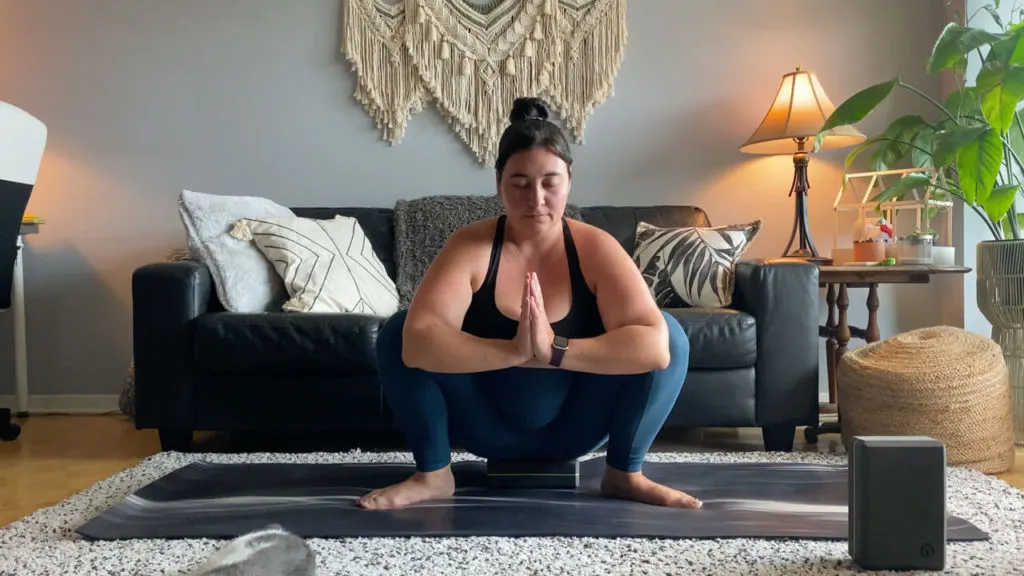
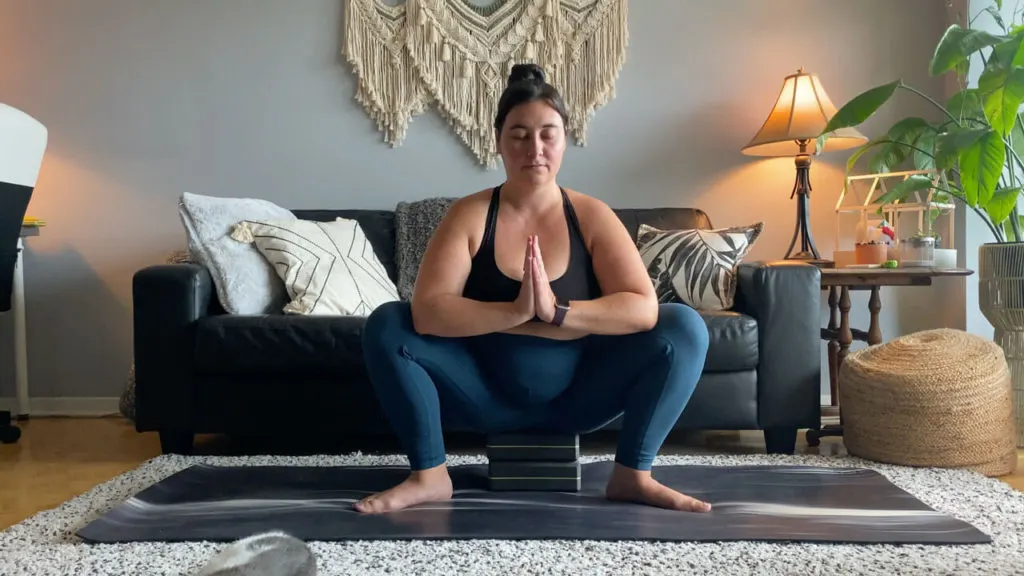
Yogi Squat
Yogi squat is a great yin pose for the chakras because it aligns them all while opening the hips and lengthening the spine.
Bring the soles of your feet to the mat and lift your hips so that you come into a forward fold. Walk your feet out to about the width of your mat, and turn your toes slightly outward. Drop your sit bones between your feet and rock back and forth on your feet to find that sweet spot. Option to place a block or two, or anything else under your sit bones to support you.
Bring your hands into prayer and your elbows to your inner thighs. Gently guide your thighs outwards. Allow your tail bone to grow heavy, the crown of your head to grow light. Shoulders fall away from the ears as you create space in your neck and chest. Hold for 20-30 breaths.
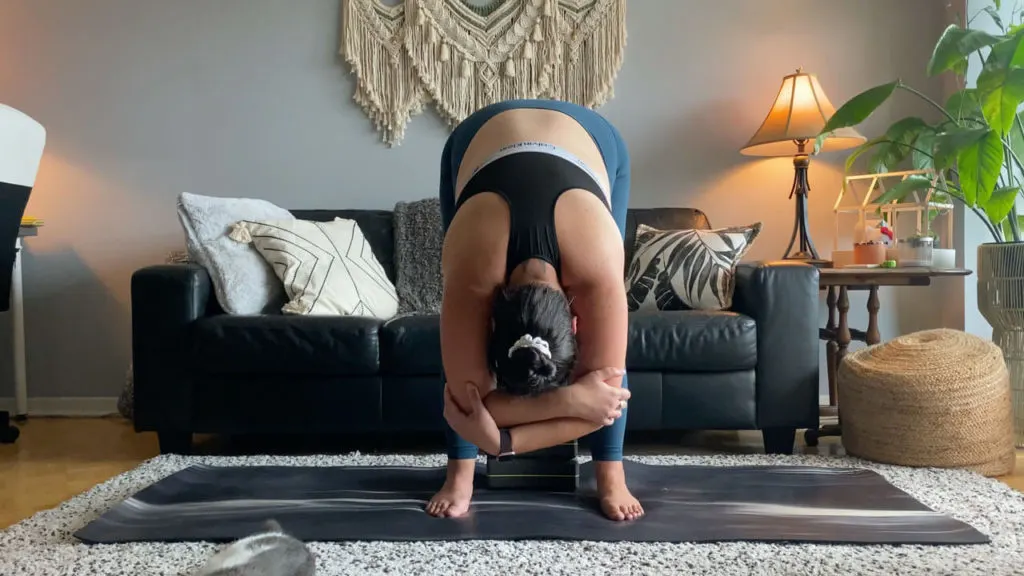
Ragdoll
As a counter pose to yogi squat, ragdoll releases your energy (your chi) to run down your spine in the opposite direction.
Place your hands on the mat and lift your hips to the sky. Walk your feet to about hip-width distance apart and bend your knees generously. Allow your upper body to be completely supported by your lower body. Your arms may dangle or you can hold onto opposite elbows with opposite hands and allow yourself to truly hang to release any lower back tension. Hold for 15-25 breaths.
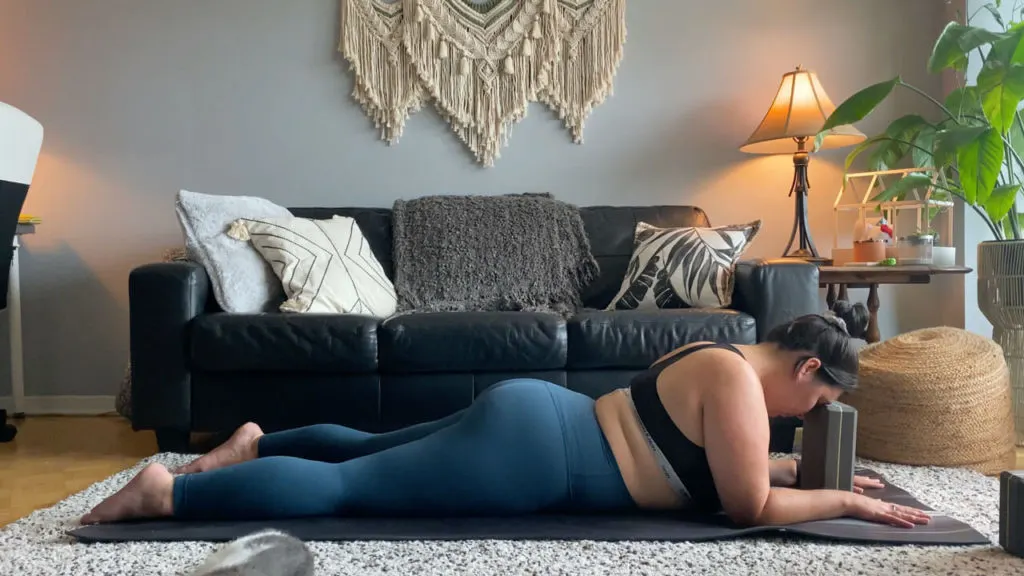
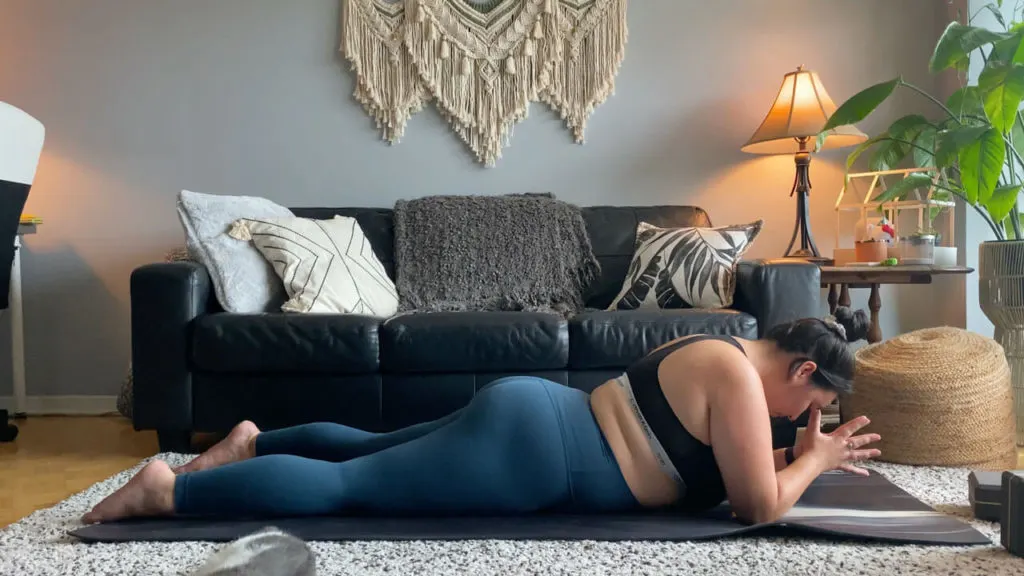
Sphinx
Open the upper front side of your body with sphinx and allow your lower body to relax.
Come to lay on your stomach. Place your forearms on the mat, shoulders stacked over elbows, fingers spread wide. Legs can be as close or far apart as feels good. Give your bum a wiggle to release lower tension in the back. Push your hands and forearms into the mat and pull back slightly to guide your heart forward.
Your head can stay where it is, looking just off the top of your mat, eyes closed. Or you can place a block on the highest setting to rest your forehead on. Lastly, you could bring your hands together, fingers spread wide, and rest your third eye on your thumbs. Hold for 20-30 breaths.
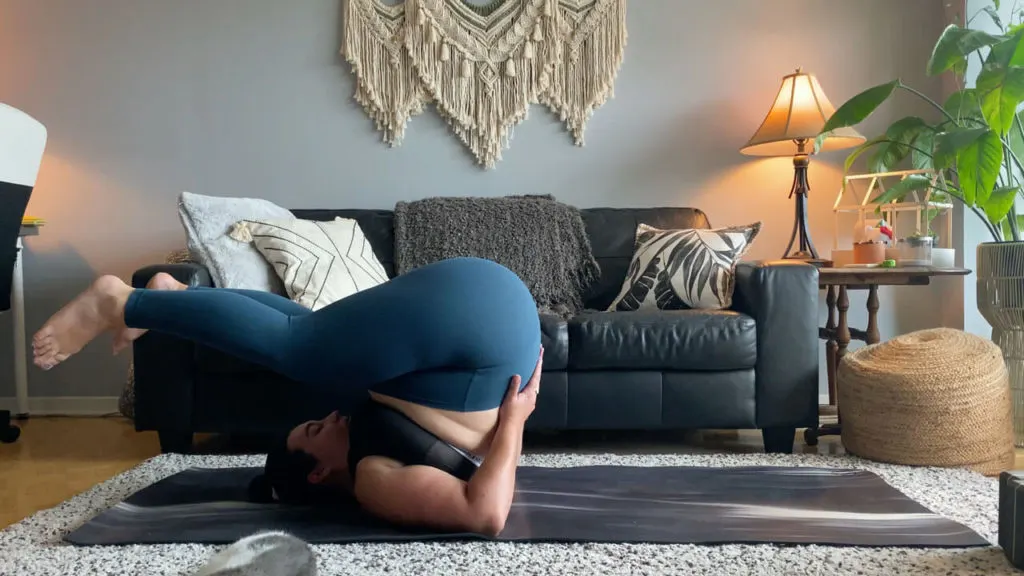
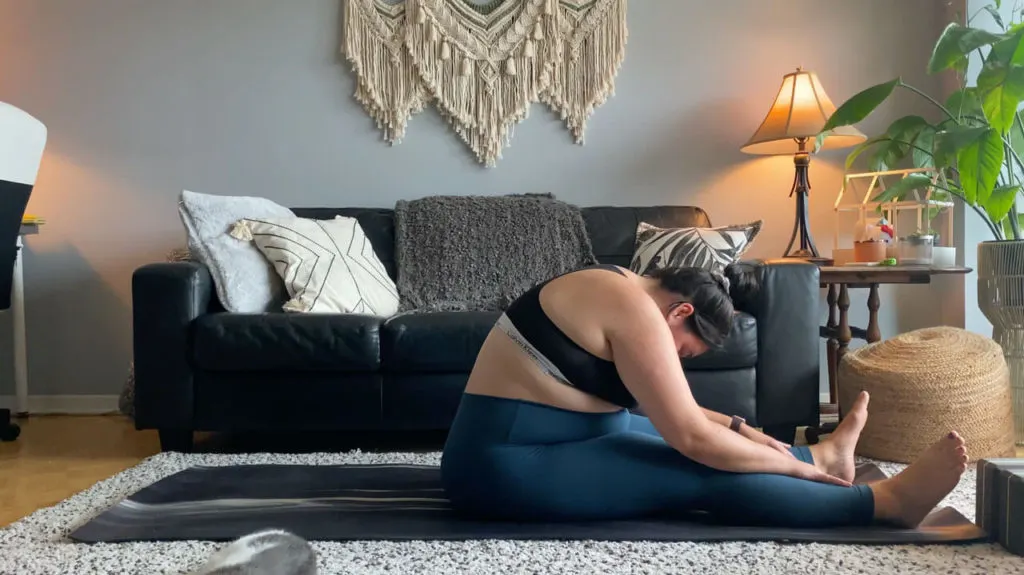
Snail or Caterpillar
Snail (the picture on the left) can be a difficult, inaccessible, or quite uncomfortable pose and it is also not safe to practice if you have a neck or back injury, have high blood pressure, or are pregnant. Caterpillar (the picture on the right) is a great alternative that still has benefits. Same same, but different!
For snail, come to lay on your back, feet can be planted on the mat or legs long. Arms are long by your sides. Push into your hands and arms as you lift your legs up and over your face as your hips come to stack over your shoulders (it’s okay if they don’t fully stack). Allow your legs to be heavy, knees bend, and neck stays netural. Do not turn your neck! Your toes may touch the ground or they may hang, either is fine! Keep your arms as are, or bend your elbows and bring your hands to your lower back to support your spine. Hold for 15-30 breaths. To release slowly and gently lower your spine back onto the mat, with the help of your arms pushing into the mat. Allow your spine to come to neutral for a few breaths.
For caterpillar, come to sit on the mat, legs out long in front of you. Your legs can be as close or far apart as feels good. Flex into your feet and engage your legs on an inhale, exhale let it go. Sit with a straight spine and then allow yourself to hinge forward. Then let your spine curl forward when you can no longer hinge. Head becomes heavy, and can hang. Option to place a block under your head or pillows or a bolster under your body. Allow your upper body to grow heavy as it will with time and props may need to be adjusted. Hold for 20-30 breaths. To release, use your hands to slowly push you back up into a seated position, shoulders stacked over hips.
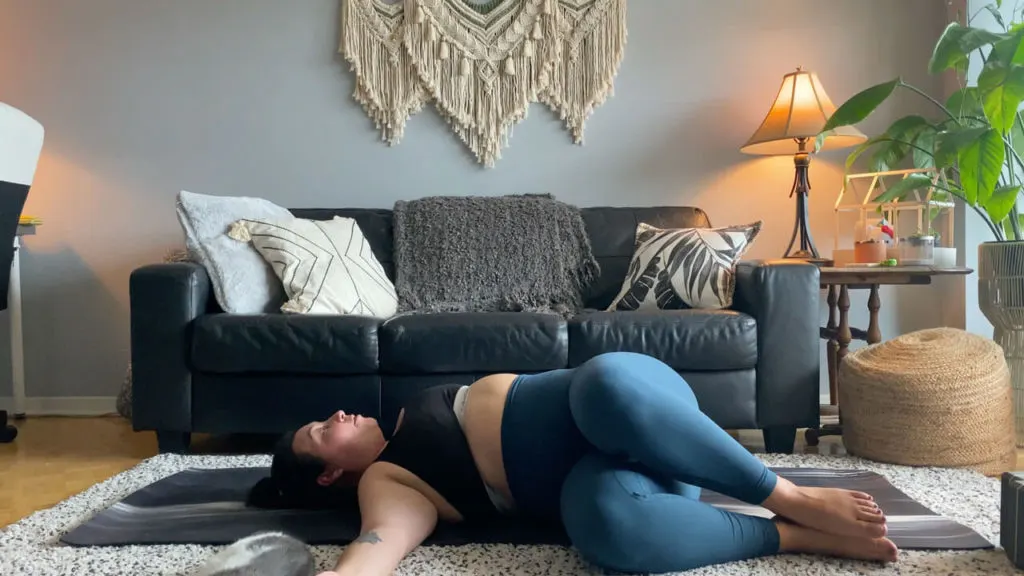
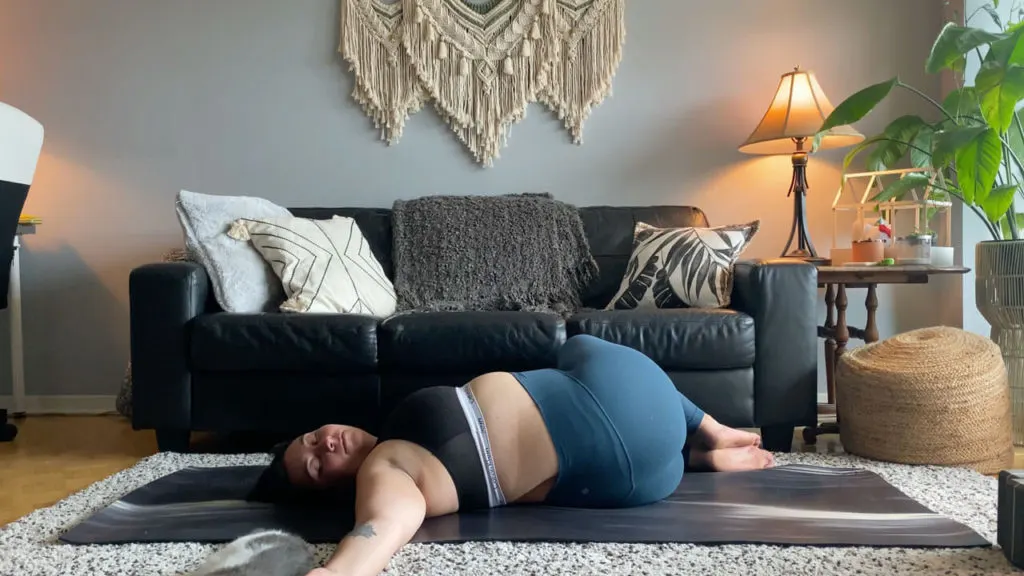
Reclined Twist
A relaxing, spine-nourishing pose, this reclined twist is a great option to shift energy through your chakras and work into your throat chakra further.
Come to lay on your back with your arms wide in a “T” shape. With the soles on your feet on the ground, lip your hips up and over to the left. Bring your knees into your chest and then let them fall over to the right. Option to place a block under or between your knees. Play with how close or far your knees are to your chest as this will change how it feels in your back.
Neck can stay neutral or fall to the left, in the opposite direction of your knees. Hold for 20-30 breaths. Neck comes back to neutral before you bring your knees back to your chest, shift your hips to the right, then allow your legs to fall to the left, neck can look to the right. Hold for another 20-30 breaths.
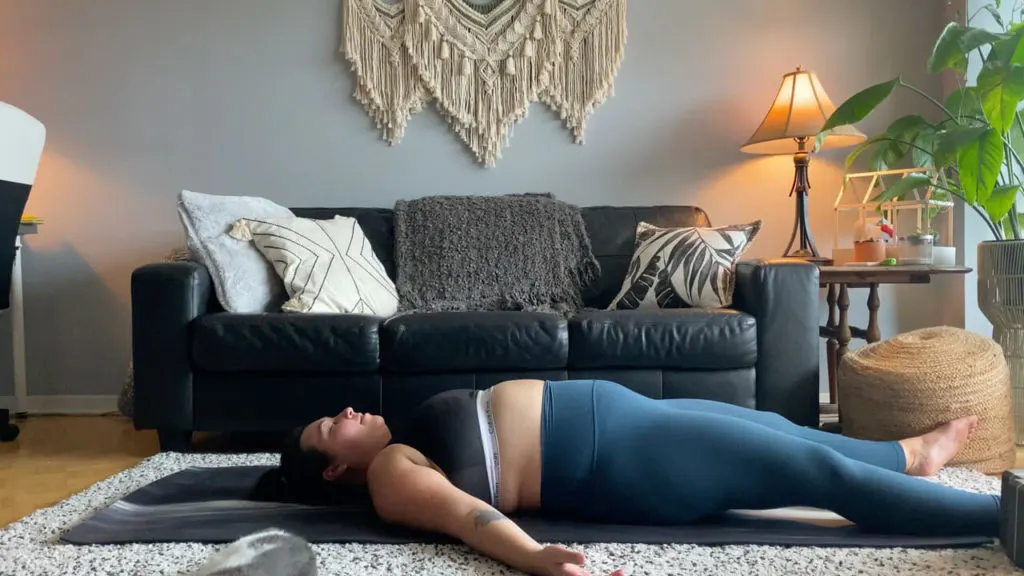
Savasana
Final relaxation pose, savasana realigns your chakras and closes the practice in stillness before you step off of the mat.
Lay on your back, legs apart and arms wide from the sides of your body. Take up as much space as feels good. Feel the crown of your head and forehead relax, around your eyes relax, your lips may part as your jaw releases. Allow your chest and upper back to be heavy, belly to be soft. Hips and glutes let go, legs and feet are heavy. Stay for as long as feels good, or at least 20 deep breaths.

